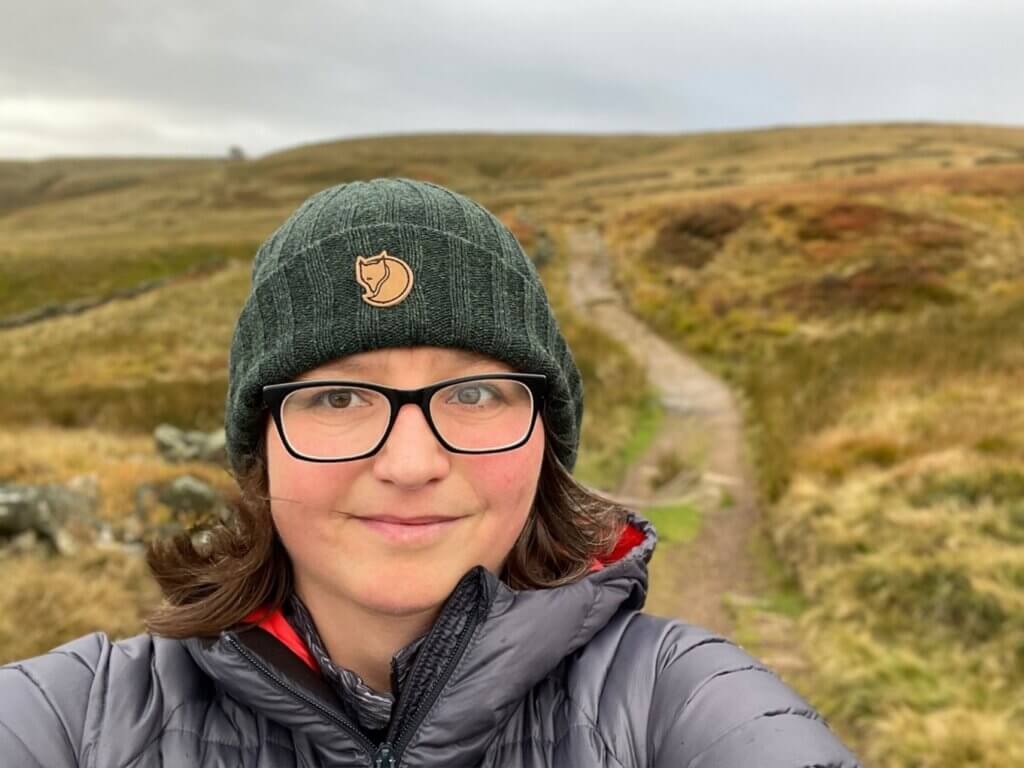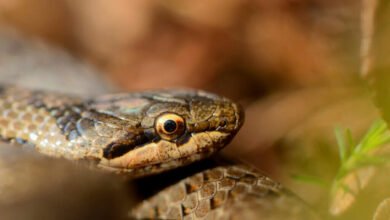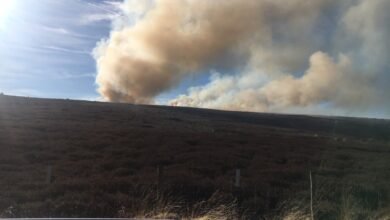
Kate is a photographer and has lived in Haworth for twenty years. Walking on the moors she has come to learn that no two days are ever the same. Her blog about Haworth & Stanbury moors is at www.katietuppence.com. This is her third blog in this series about Walshaw Turbines – see here for the whole series.
Turbine 25 Shooting Boxes SD 97299 33168 ///whistle.afflicted.duration

1 June 2025 This morning I’m up before sunrise and heading to the proposed site of T25 just east of the shooting boxes on Dean Gate. And what an epic morning I’ll have; I’m blown away with it all. I follow my private rules for these walks in nesting season: stay on the hard paths and all the photos must be seen on the walk. Anyone could see what I saw.
The moorlands have come alive with the vibrant greens of the bilberry, the grasses and sedges, the purple moor grass offering a balanced contrast and the cotton grasses that thrive in the blanket bog.



I’ve been watching a lapwing nest each morning. It takes a while for me to get my eye in but eventually I spot them, three tiny chicks moving in short bursts, close to one of the adults.


I follow the Pennine Way across the tops and down to the reservoirs, stopping off at my favorite tree on the way for a sunrise shot before stopping at the shooting lodge just below the site of T25 for a rest and coffee.

As I drank my brew, I spotted a short-eared owl out hunting, low to the ground, methodically moving across the landscape, scanning the area. It came to me a few times, curious, unafraid, as fascinated by me as I was by it, perhaps. I watched it sweeping, eventually swooping down and back up and away with its catch.

I don’t go onto the exact site of T25, as close to the footpath as it is. I’m always conscious of the fact that there is an abundance of chicks around this time of year. But as I stood glancing across, the Calder valley off in the distance, I heard the soulful call of the golden plover up on the tops. They do as well on Walshaw Moor as anywhere in the north of England and Scotland. “It’s close”, I thought to myself. I got my camera out to scan the ground, and there it was on a rock, the early morning sun lighting its golden plumage. The chicks must be close by.


I do my usual loop dropping down to Walshaw and back along the road to the reservoirs. I can’t help but notice the huge number of curlews there are in the area. As on Haworth and Stanbury moors there is an abundance of breeding pairs of curlews and it makes me realize seeing so many down here, how important Walshaw Moor is for our red-listed endangered waders. This year there are breeding pairs everywhere.



I don’t see a curlew chick; they are very well camouflaged, and I’d have to intrude. They are obviously there because of the way the adults behave as I slip through on the track. The curlews must have raised plenty of chicks to fledging in the las two years because the moor is packed. Curlews must be doing better here than anywhere else.
Heading back up from the reservoirs back towards Top Withins, I spotted something moving out of the corner of my eye. A pair of geese with two goslings. All eyes were on my as they moved slowly across the ground. Expecting the adults to attack, I dropped down to the ground and waited for them to move away. It was a special moment sitting watching them. They were obviously aware of me but didn’t seem to be too worried.

There are grouse and pheasant chicks everywhere. Both are very good at lying low and remaining perfectly still when alerted to danger by their parents. But if you sit still for long enough, they will show themselves.


I think for me the highlight of my walk has got to be towards the end as I was making my way from Harbour Lodge back to my car. I spotted a deer being escorted off the moors by a lapwing. It made me smile. Nature works in such an incredible way.

+++++++++++++++++++++++++++++++++++++++++++
This is the 38th in a series of guest blogs originally based on the 65 wind turbines which Richard Bannister planned to have erected on Walshaw Moor. Turbines 5, 6, 8, 9, 11, 13, 14, 16, 17, 21, 21CEP, 25, 27, 31, 32, 33, 33CEP, 34, 35, 36, 37, 38, 40, 42, 42CEP, 43, 44, 47, 53, 54, 56, 57, 58, 60, 62, 64 and 65 have already been described.
The developers have canned their original 65 wind turbines, quite possibly in response to the public humiliation of having their so-called ‘plan’ publicly shown to be damaging, irrational and probably unlawful. They have come back with a plan for 42 wind turbines and the amazing Nick MacKinnon and friends have regrouped and set off on a new tack too. The series continues.
To see all the blogs – click here.
[registration_form]
Source link




